- Home
- slideshows
- miscellaneous
- I tried the $3,000 digital weights machine that's like a Peloton for strength training and found how at-home fitness systems are the future - at least for those that can afford it
I tried the $3,000 digital weights machine that's like a Peloton for strength training and found how at-home fitness systems are the future - at least for those that can afford it
When I work out, I opt for weight lifting rather than cardio. So Tonal stuck out more so than would a cardio-based at-home fitness machine, like the ultra-popular Peloton bike.

And that's something Tonal has going for it — it's among the first strength training-focused, digitally-connected fitness systems that you can use in the privacy of your home.

The company has a showroom in San Francisco's Cow Hollow neighborhood, so I decided to give it a try.
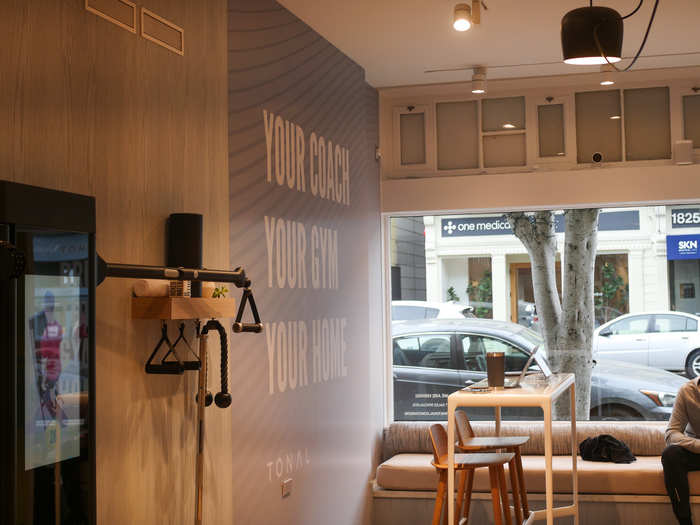
I was a little apprehensive. Eliminating the need to travel to and from a gym is appealing, and so is not having to work out surrounded by strangers.
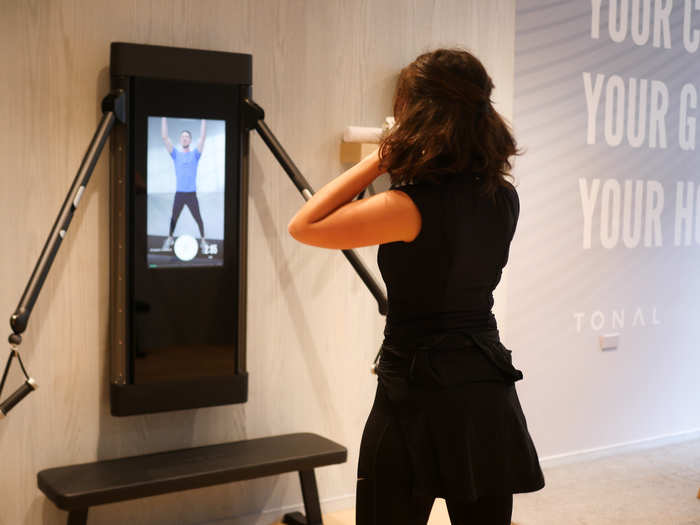
But I didn't know how I'd like using what is called digital weights instead of tangible, more traditional dumbbells or machines.
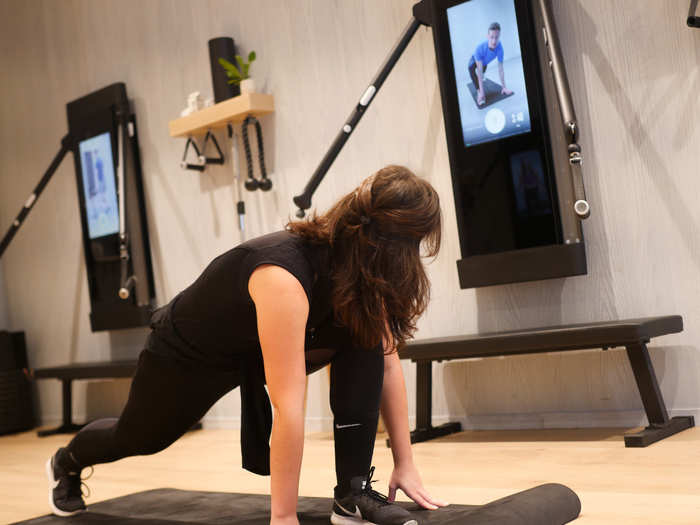
The Tonal machine looks a lot like a flat-screen TV with two handlebars protruding from its sides. They're adjustable, with interchangeable attachments at their ends.
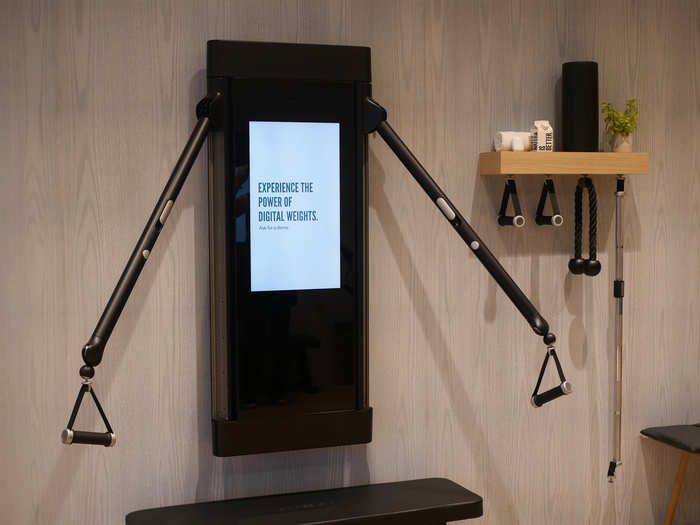
The resistance is created through electromagnetism, which basically means that the weights are digitized.
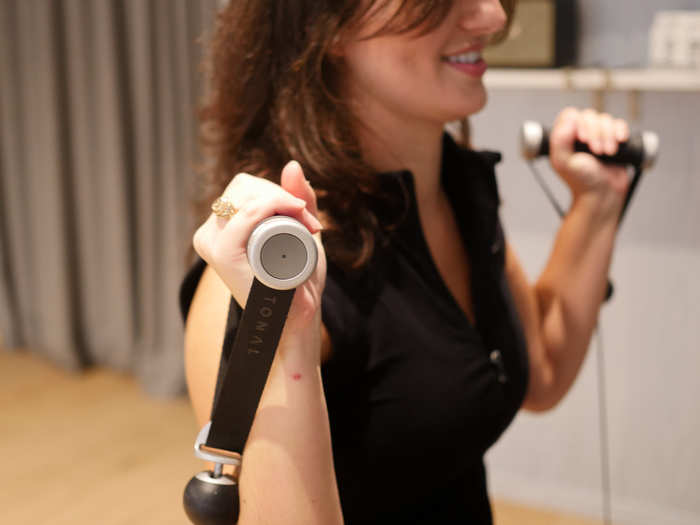
You can activate the resistance yourself from the Bluetooth-connected handles or from the screen. Just click the button on the handles with your thumb to turn the weights off …
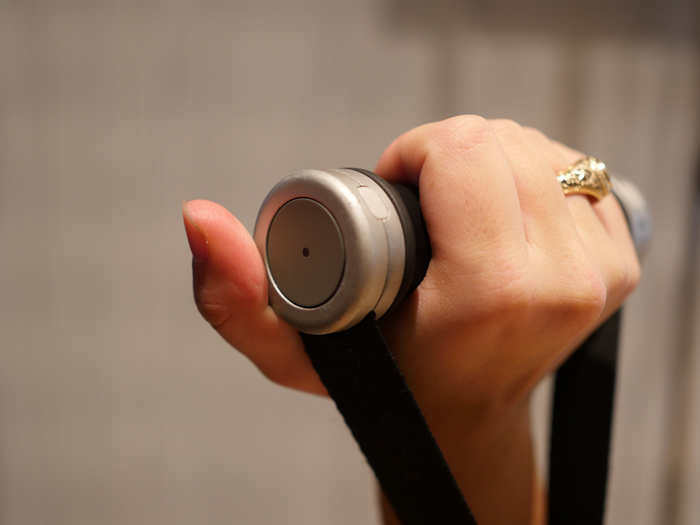
... and on.
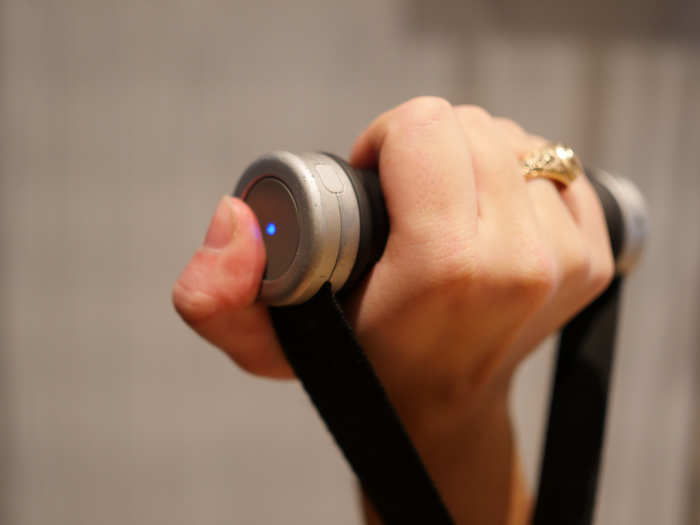
Before I could start working out though, I had to create an account. I filled in my weight, height, and chose my goals for using the machine. I chose the Build Muscle feature and the Get Lean tab as my secondary goal.
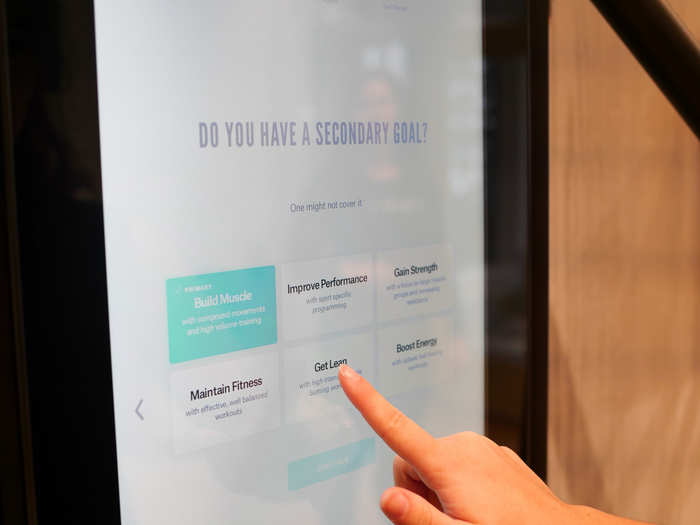
Users then do a one-time preliminary test before getting started that allows the machine to assess your strength and customize its settings to your body.
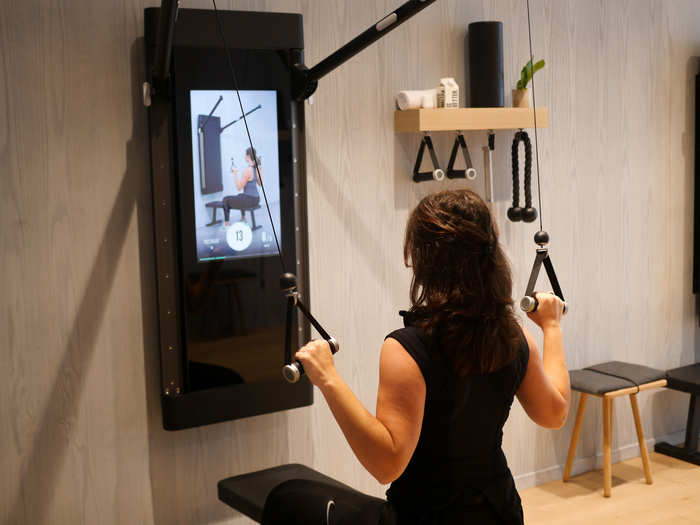
It had me do three different exercises to decide how much weight I should use for some basic moves.
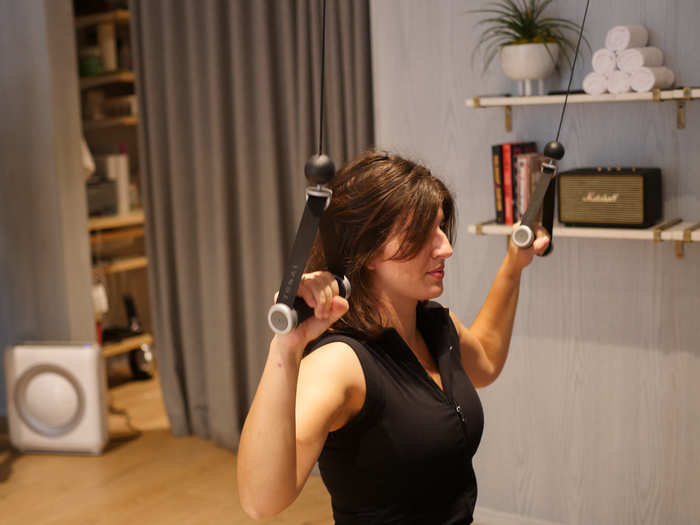
Now, whenever I started any workout targeting whatever muscle group, the machine would know how much to "load onto my plate."
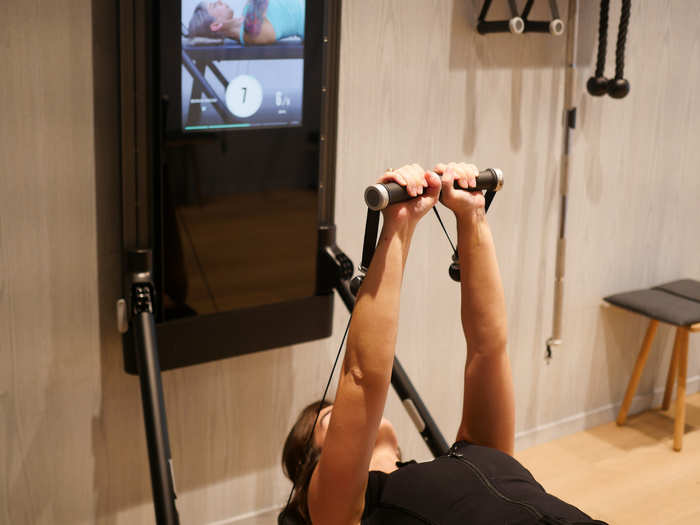
The weights that the machine assigned me were similar to what I would usually use at the gym, except for maybe the deadlift — I'll usually go a bit heavier there than 7 lbs.
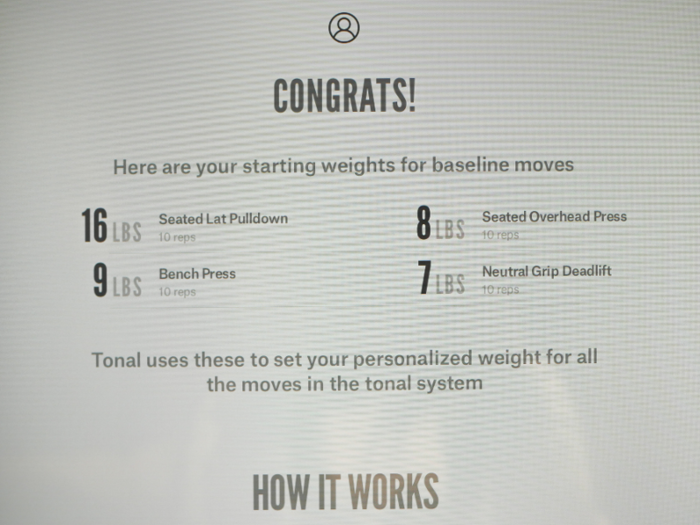
The calibration test was also a good time for me to fiddle with the machine and get to know how it works.
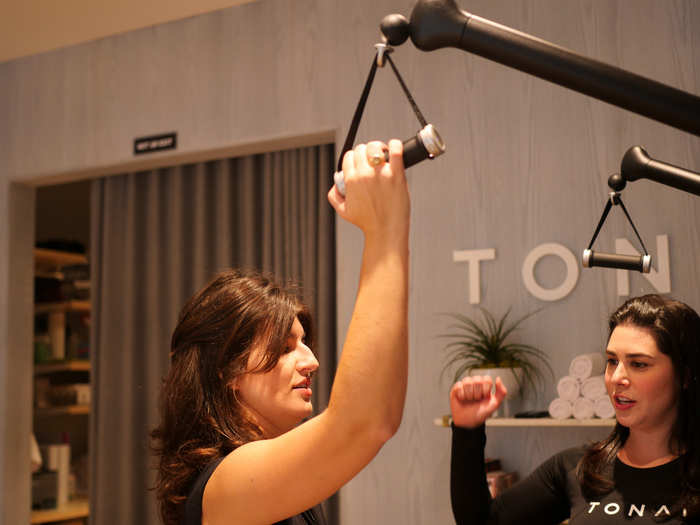
There are three ways to adjust the handlebars.
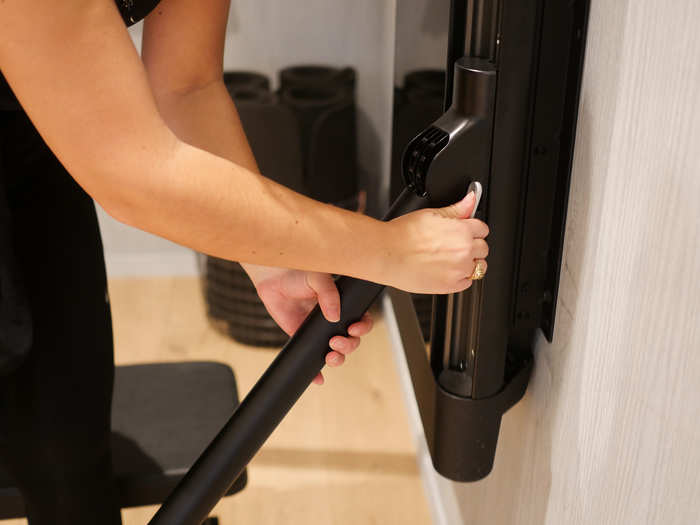
A lever at the top slides it up and down the side of the panel, a lever in the middle of the bar allows you to move it vertically at different degree angles, and a button right below that can move the bars inward and outward.
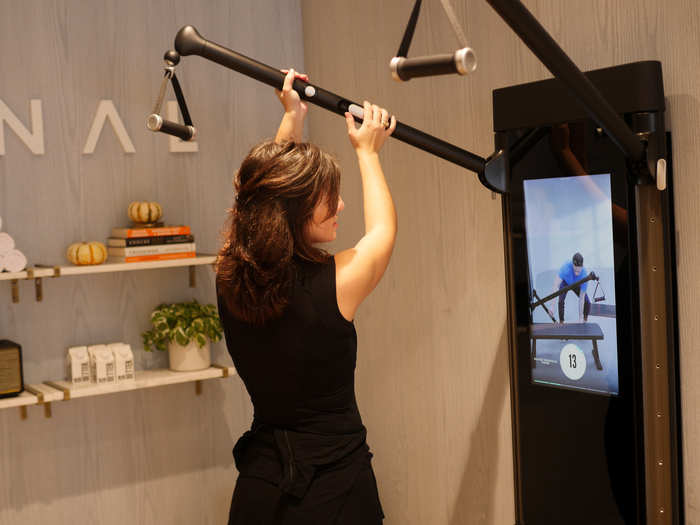
It took me a bit to get the hang of it, but it also takes a while to get used to a set of machines at a new gym. After some time, I'd imagine using it would become second nature.
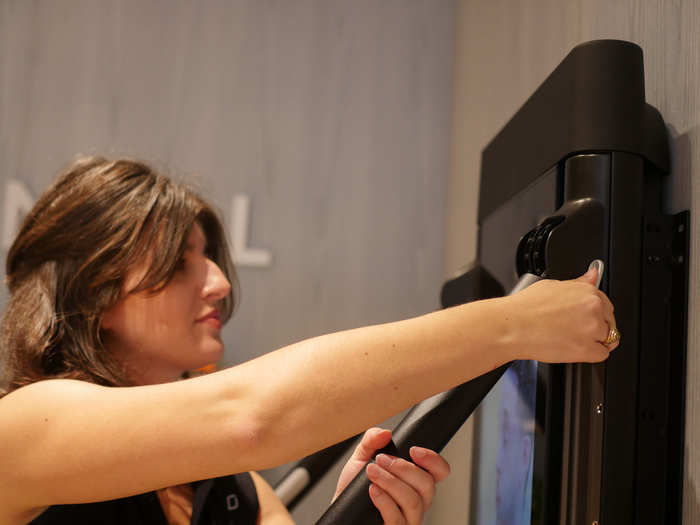
Peloton tunes you into live classes, but Tonal's sessions are pre-recorded at a studio in San Francisco featuring trainers in the area.
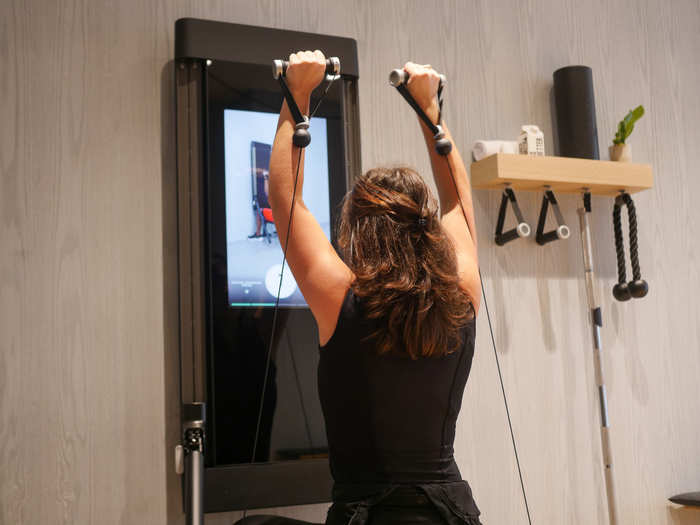
This was my first training session ever where I was following along with a virtual instructor, and I quickly learned that I was not a fan.

I kept turning and twisting toward the screen to try to keep up with him.
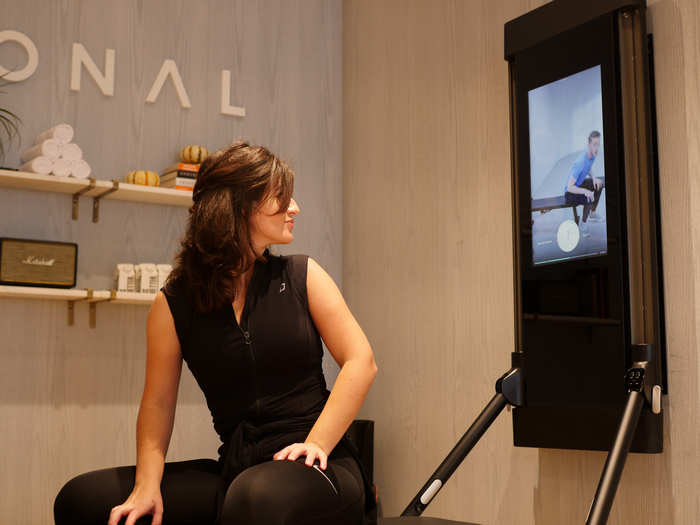
Once my strength was calibrated, it was time for the actual workout. There were a slew of programs to choose from, with all of them ranging from 15 to 30 minutes in length. The selection was a little overwhelming.
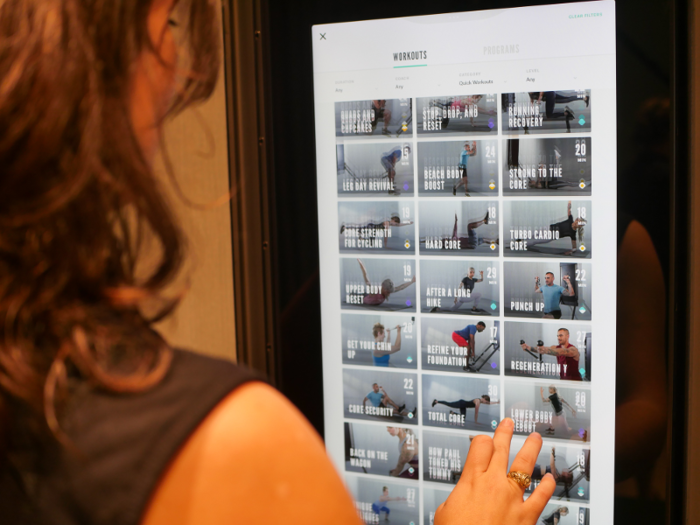
I settled on one called "Leg Day Revival." Sumo stretches, pull-throughs, and lunges were in the line-up. It was 3 sets of 15 reps.
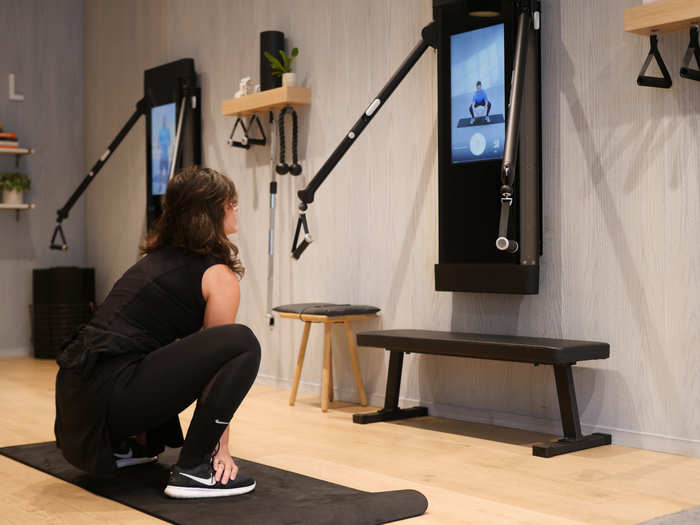
All three of the moves are exercises that I don't usually gravitate toward in the gym, which means that I was relying on my virtual Tonal instructor to learn them.
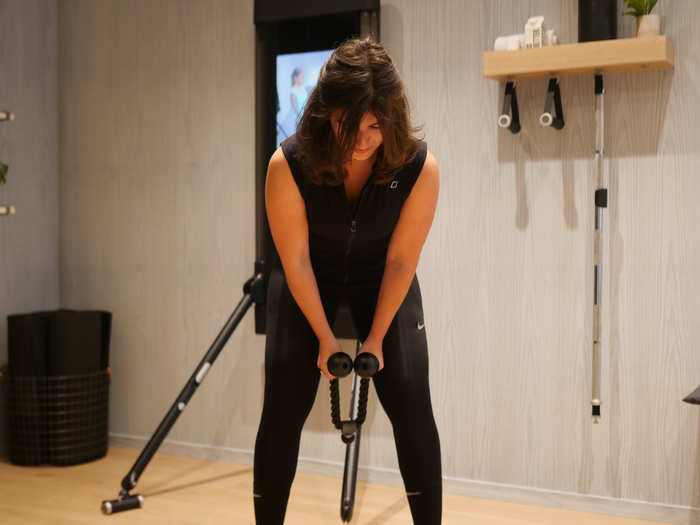
This may have been one of my biggest qualms with the machine: I had no idea if I was executing the moves with the correct form.
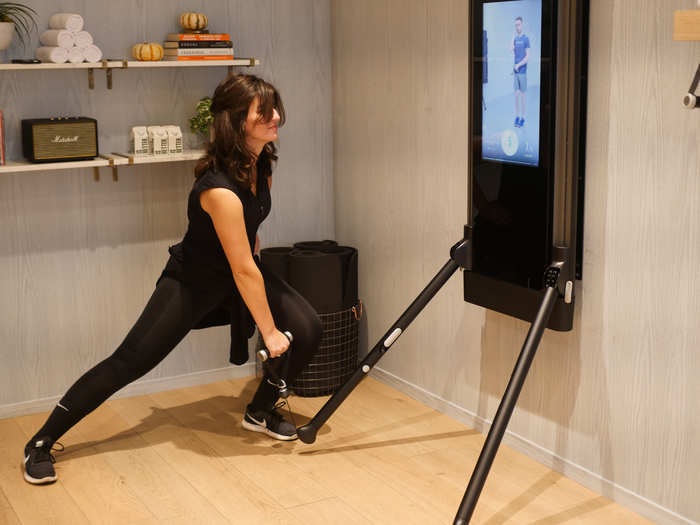
This wasn't cardio exercise where the technique wasn't as much of a focus — you can certainly hurt yourself on an at-home treadmill or bike, but the movement is more straightforward.
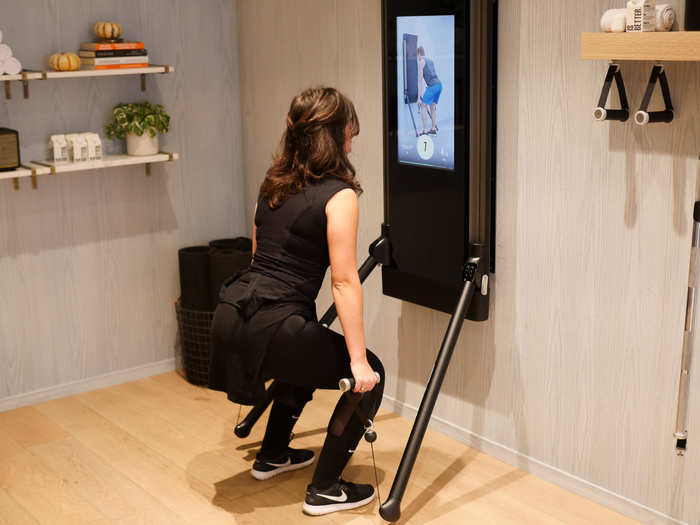
Lifting weights incorrectly can lead to some serious injuries, and hypothetically if I was alone in my living room using a Tonal machine with improper form, no one would be around to help.
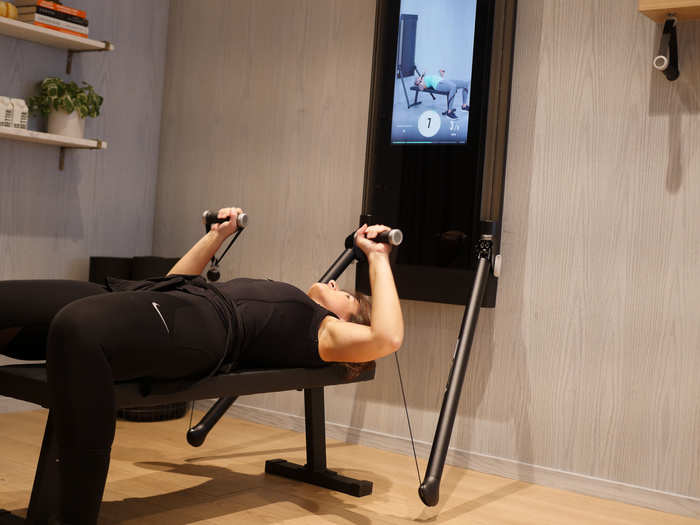
I asked one of the Tonal staff members if the machine could correct me if my form was off, and she said no. The only kind of correcting technology the machine employs is when you're lifting too quickly or too slowly.
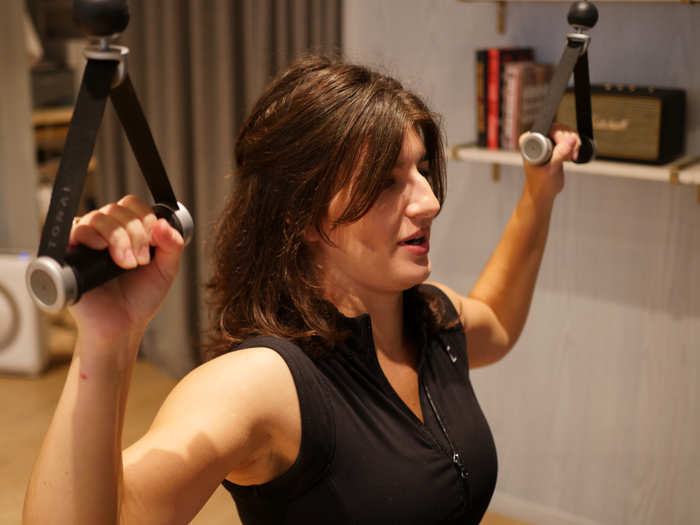
I found myself wanting an actual human standing next to me showing me the best ways to perform the exercises.
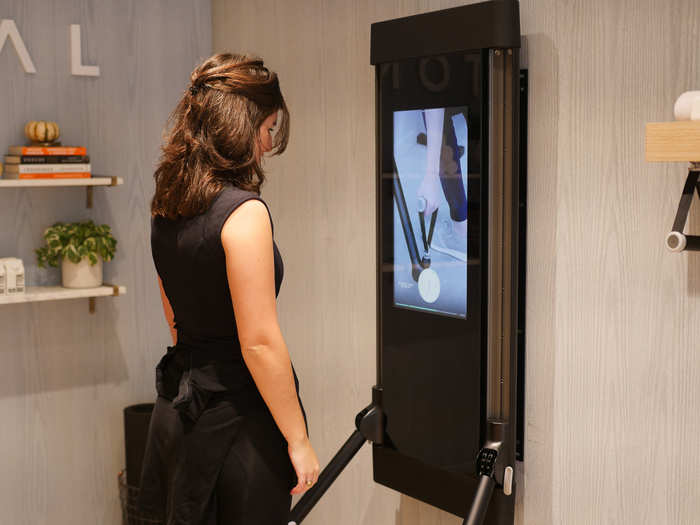
What I liked more was the free-weights feature on the machine. It allowed me to choose individual exercises to do across different muscle groups.
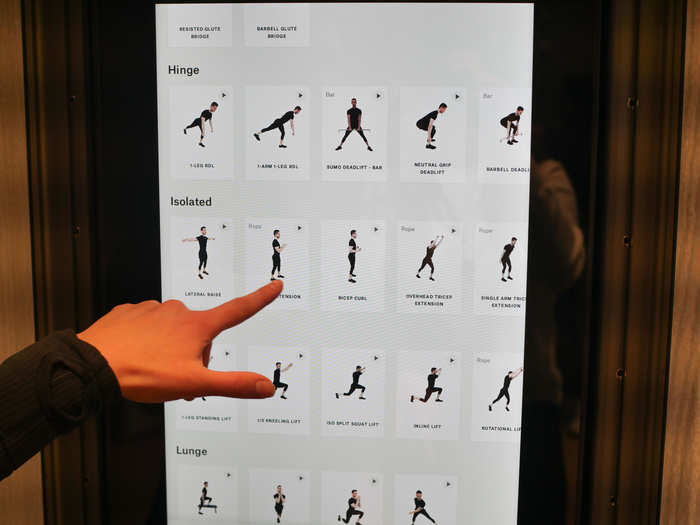
I was able to choose exercises I was more familiar with, like a bicep curl. Since I've done these before, I was more confident that my form was more on track.
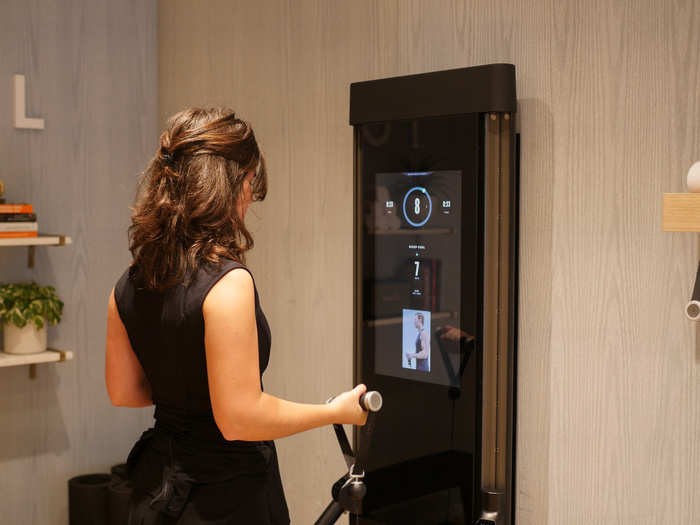
I tried out some of Tonal's unique features with the bicep curl, like the Chains mode, which simulates a traditional weight-lifting practice that adds more weight at the top of a lift.
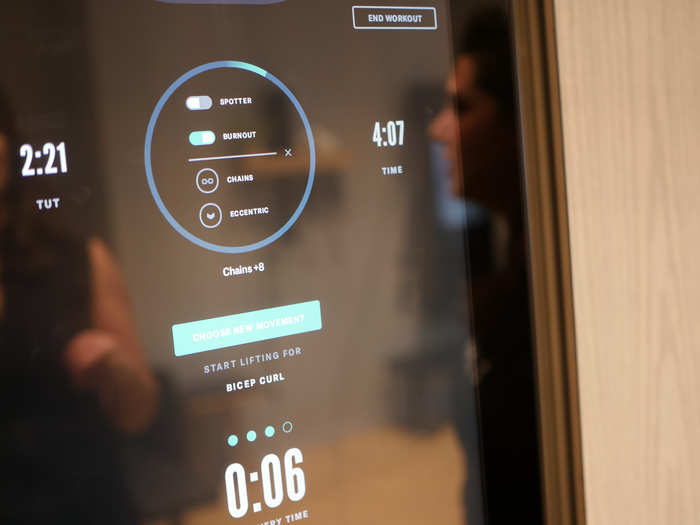
There's also an Eccentric mode that challenges you during the negative part of your rep, which means that when gravity is making a lift easier on you, the machine kicks in with a dose of resistance.
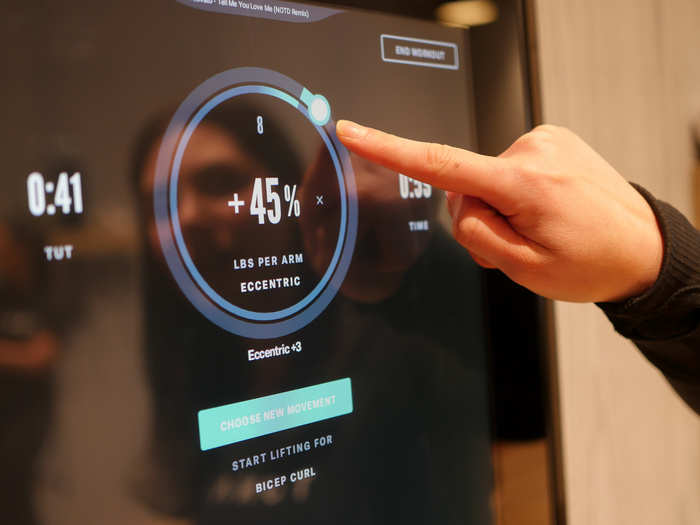
The Eccentric mode is also a unique industry feat, as reported by Inc. In a gym, even if you have a personal trainer, there's no way to add resistance when gravity is working on your side in the middle of a lift. Tonal can do that.
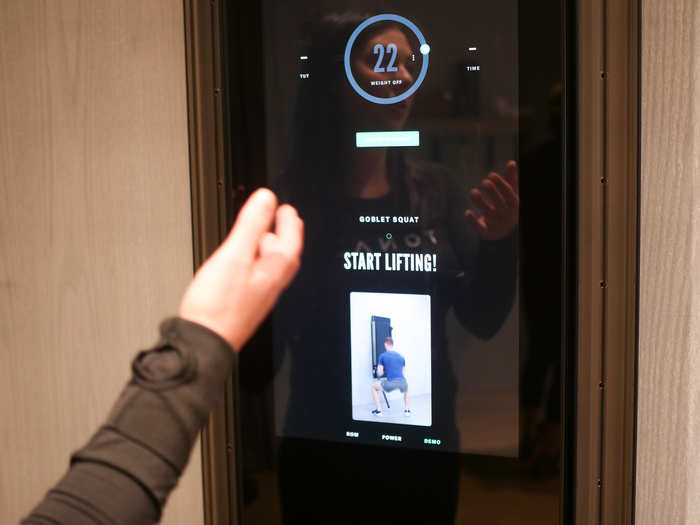
Source: Inc
The machine also has a built-in spotter feature, which doesn't correct you if your form is off, but will lessen or increase the weight if you're going too slowly or too quickly, respectively.
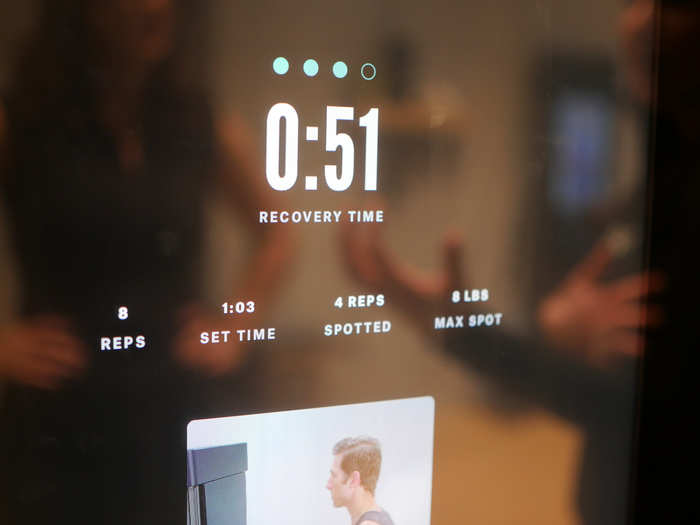
For example, when the Chains mode was activated on the bicep curl, I struggled — and the machine picked up on that. It automatically decreased my weight a couple notches.
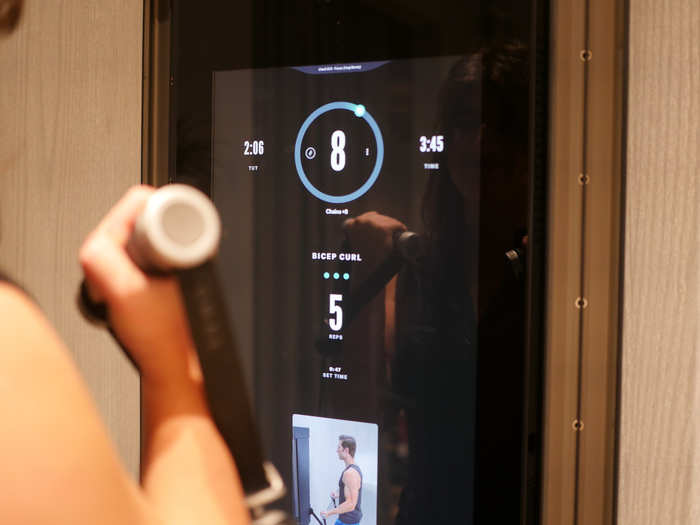
When the workout was over, my muscles burned. I never doubted that a Tonal workout would be effective and that I'd wake up sore the next day (which I did.)
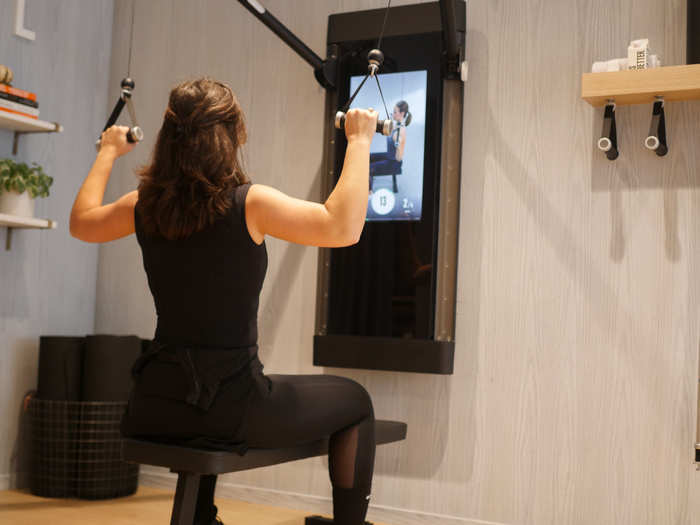
But the issue is that these machines are still so far out of the price range for a large group of people, including myself, even though there are payment plans.
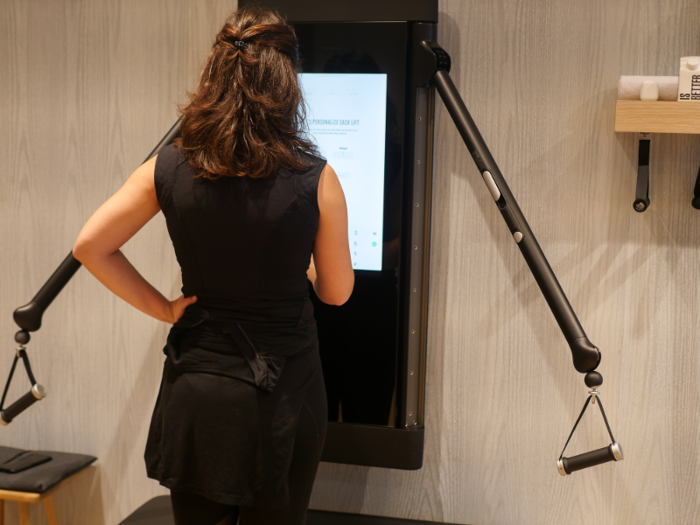
A Tonal machine retails for $2,995, plus a monthly $49 video training subscription fee. And on top of that, unlike Peloton, a Tonal machine requires mounting to a wall in your home.
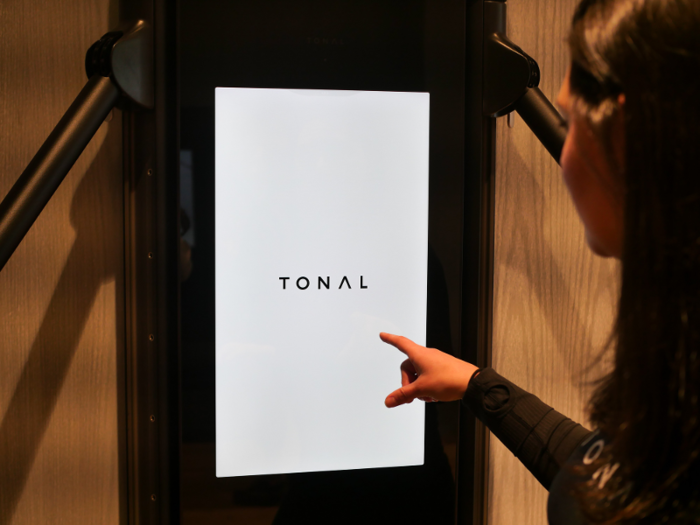
Source: Business Insider
Tonal professionals can attach the machine "to most walls," with only about eight holes being made, a Tonal representative told me via email.
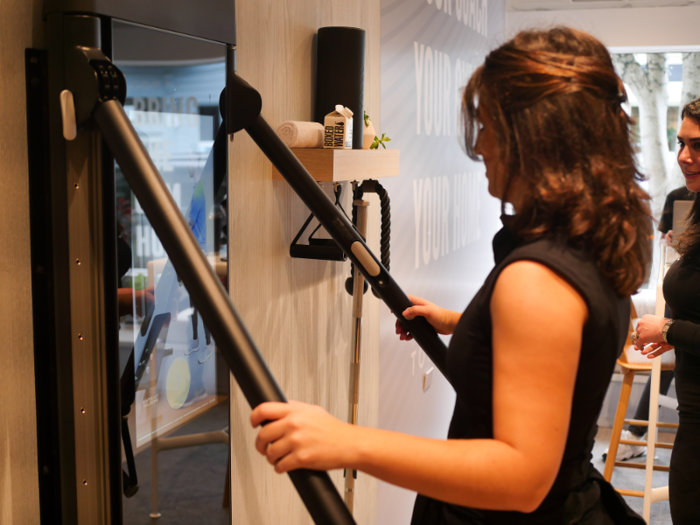
Source: Tonal
The Tonal spokesperson said that the company has a number of customers who are renters that enjoy the compactness of the machine. But many rental apartments likely wouldn't allow the installation, so you should definitely check first before buying.
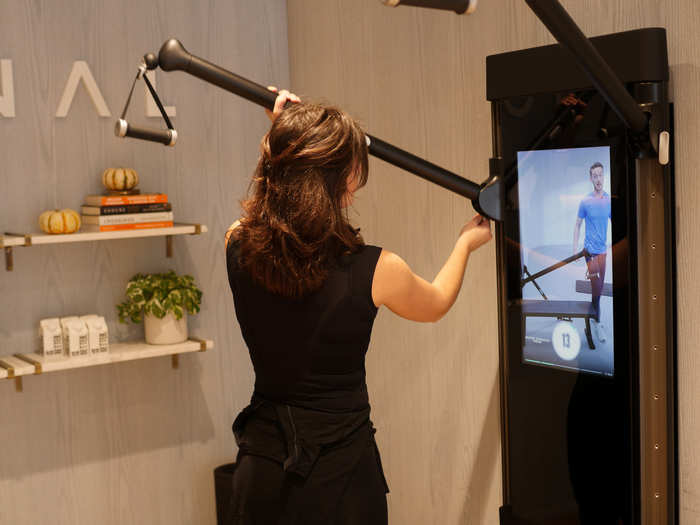
So the target market for this kind of equipment isn't just those who could afford the $3,000-plus investment for the machine — it's also likely those who can afford to own a home.
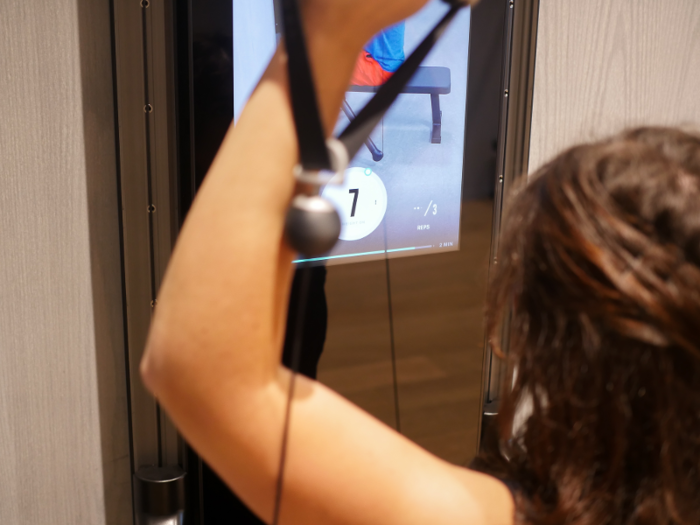
Which is not an inexpensive feat in the pricey Bay Area, though Tonal is used by customers across the nation.
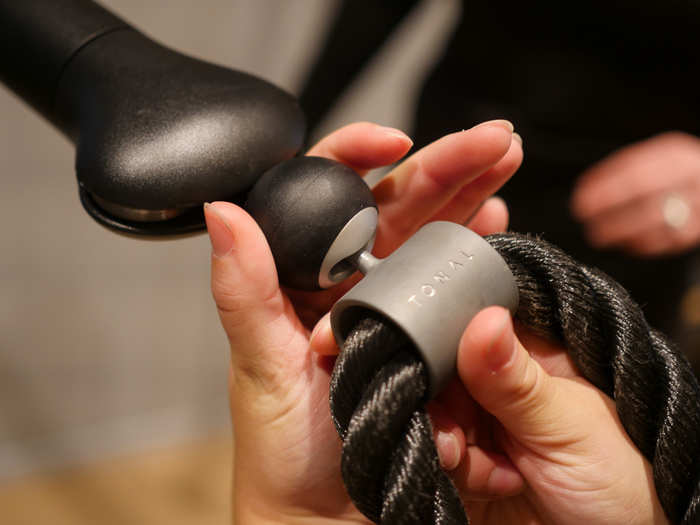
The Tonal panel does look a lot more aesthetically pleasing when it's not in use than a hodgepodge bunch of dumbbells laying around your house does. And I can't deny that, at the end of the day, the machine is effective.
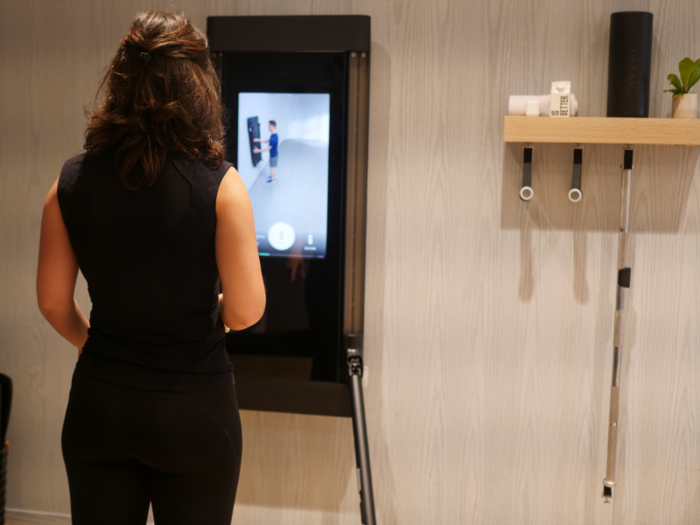
Fitness experts have also increasingly stressed in recent years that staying in good health takes more than just cardio. You need to lift, too.
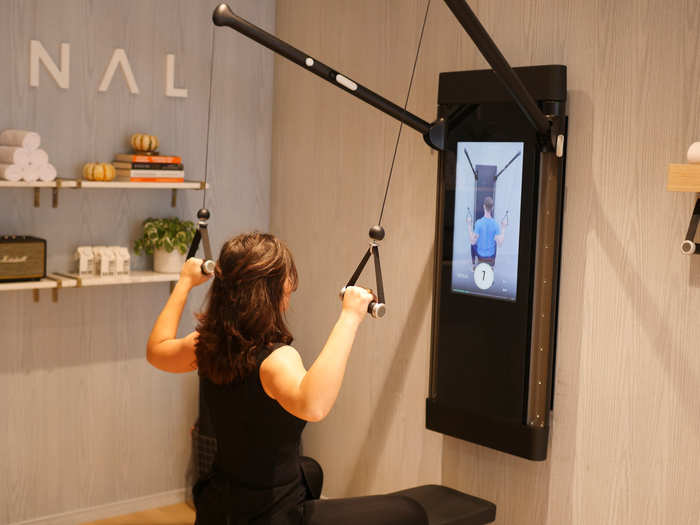
Source: Business Insider, Men's Health, Healthline
So, as TechCrunch reported, a large portion of Tonal users also own a Peloton to get in their regular cardio.
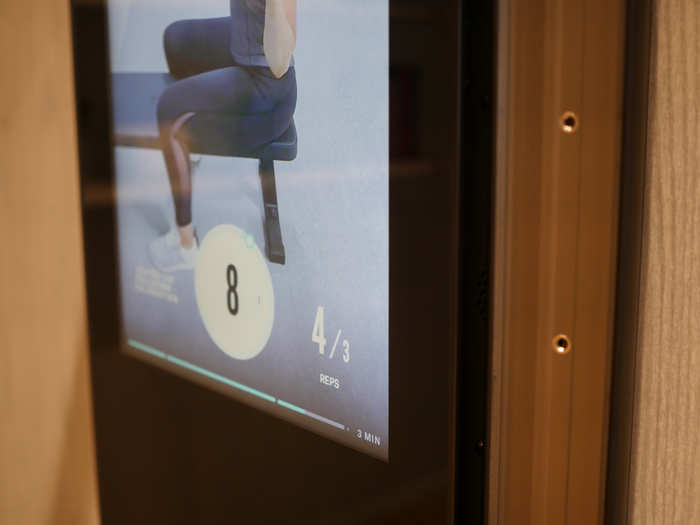
Source: TechCrunch
Which means that fitness aficionados with a predilection for at-home workout machines — and with the budget to match — are shelling out a collective $5,000 for both a Tonal and a Peloton and never have to go to the gym again.
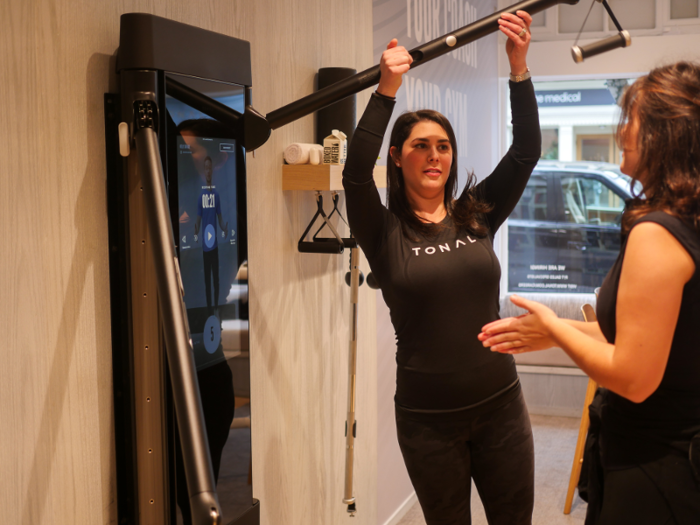
I guess that leaves more space on the communal squat rack for us mere mortals.
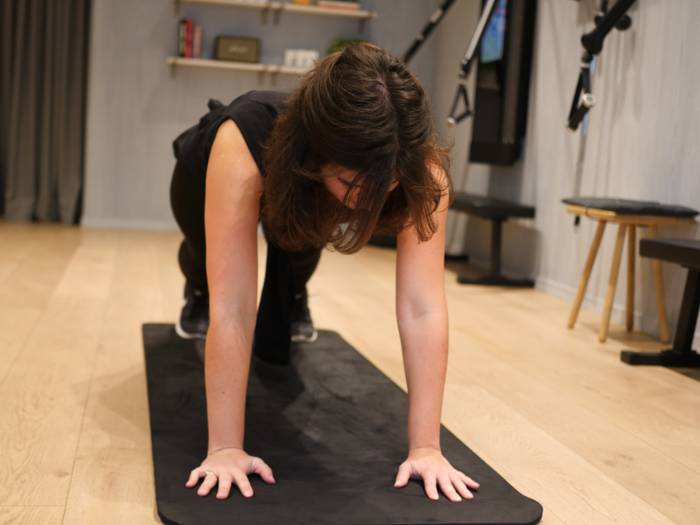
Popular Right Now
Popular Keywords
Advertisement